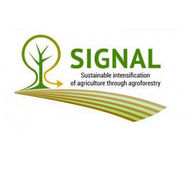Impacts of monoculture cropland to alley cropping agroforestry conversion on soil N2O emissions (2023.0)
Shao G., Martinson G., Corre M., Luo J., Niu D., Bischel X., Veldkamp E.
GCB Bioenergy, 15 (1), 58-71
Abstract
Monoculture croplands are a major source of global anthropogenic emissions of nitrous oxide (N2O), a potent greenhouse gas that contributes to ozone depletion. Agroforestry has the potential to reduce N2O emissions. Presently, there is no systematic comparison of soil N2O emissions between cropland agroforestry and monoculture systems in Central Europe. We investigated the effects of converting the monoculture cropland system into the alley cropping agroforestry system on soil N2O fluxes at three sites (each site has paired agroforestry and monoculture) in Germany, where agroforestry combined crop rows and poplar short-rotation coppice (SRC). We measured soil N2O fluxes monthly over 2 years (March 2018–January 2020) using static vented chambers. Annual soil N2O emissions from agroforestry ranged from 0.21 to 2.73 kg N ha−1 year−1, whereas monoculture N2O emissions ranged from 0.34 to 3.00 kg N ha−1 year−1. During the rotation of corn crop, with high fertilization rates, agroforestry reduced soil N2O emissions by 9% to 56% compared to monocultures. This was mainly caused by low soil N2O emissions from the unfertilized agroforestry tree rows. Soil N2O fluxes were predominantly controlled by soil mineral N in both agroforestry and monoculture systems. Our findings suggest that optimized fertilizer input will further enhance the potential of agroforestry for mitigating N2O emissions.
